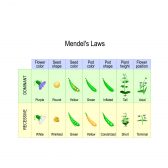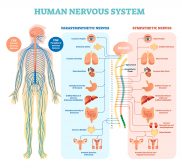Definition
noun
The hematopoiesis of granulocytes
Supplement
Hematopoiesis is the process of forming new blood cellular elements in vertebrates. The process starts at the stem cells becoming committed progenitor cells that eventually develop into fully mature differentiated cells in blood. In humans, the cellular elements of the blood include red blood cells, white blood cells, and thrombocytes. These cells are all derived from the multipotent hematopoietic stem cells (HSCs). These have the ability to give rise to different mature blood cell types, such as erythrocytes, T cells, B cells, granulocytes, megakaryocytes, macrophages, and dendritic cells. Granulopoiesis, in particular, is hematopoiesis that leads to the formation of granulocytes. It occurs chiefly within the bone marrow. In this regard, below is the series of stages in granulopoiesis:
(1) A hemocytoblast gives rise to common myeloid progenitor cells (CMP).
(2) The CMP give rise to CFU-GM (i.e. the colony forming unit that leads to the formation of granulocytes and monocytes).
(3) Some of the CFU-GM develop into CFU-Gs (i.e. the colony forming unit that leads particularly to the formation of granulocytes).
(4) The CFU-G develop into myeloblasts.
(5) The myeloblasts develop into promyelocytes.
(6) The promyelocytes develop into myelocytes.
(7) The myelocytes develop into metamyelocytes.
(8) The metamyelocytes develop into band cells.
(9) The band cells mature into granulocytes, particularly polymorphonuclear leukocytes.
Granulocytes are white blood cells characterized by the presence of cytoplasmic granules as opposed to agranulocytes that seem to lack them. Polymorphonuclear leukocytes and mast cells are examples of granulocytes. The mast cell, though, do not come from the same granulocytic lineage. They arise from the common myeloid progenitor cell without going through the various developmental stages in the granulocytic series.
In humans, the polymorphonuclear leukocytes are classified into eosinophils, basophils and neutrophils (according to the staining properties of the granules using a Romanovsky type stain).
Word origin: granulo– < granulocyte + Greek poiēsis, creation, from poiein, to make
Synonym(s):
- granulocytopoiesis
See also:
Related form(s):
- granulopoietic (adjective)







